How to care for down products
Down products are valuable companions in the outdoors, and they require proper care to maintain their performance. Occasional cleaning and regular maintenance will help keep them functioning as effectively as when they were new.
Here are some tips on how you best take care of your down products:
Keep insulation qualitie
To keep the insulating qualities of your down product in the best possible condition, it is better to air the product, instead of washing it too often, as the natural oils of the down (which helps with lofting and natural water repellency) gradually disappear with washing.
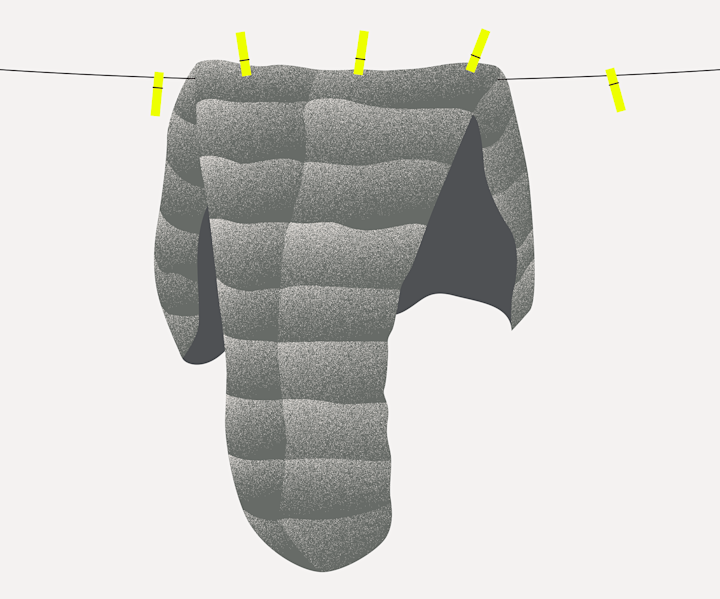
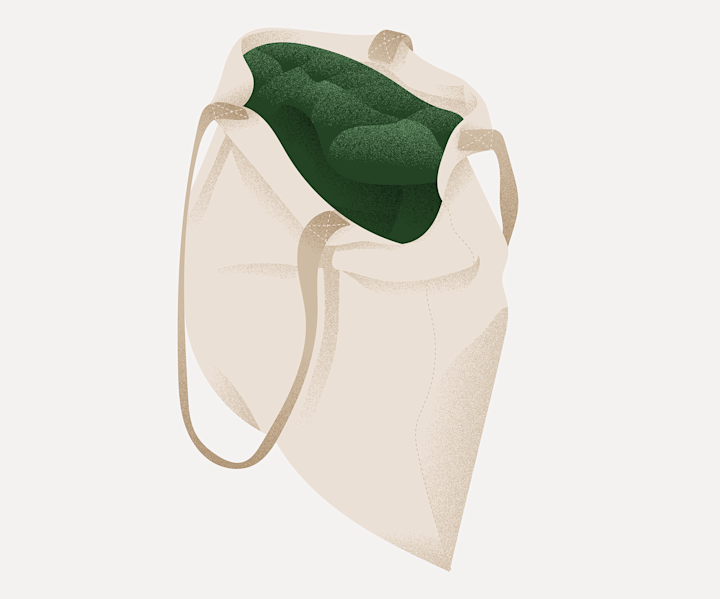
Store products
When the product is not in use, it should be stored, out of direct sunlight, in a cool, dry place in a loose cotton storage bag or by hanging it – not in a compression bag. If the down is compressed for a long time its insulating qualities will be impaired. Make sure the garment is thoroughly dry before storage.
Occasionally, your down jacket will need washing, as dirt, sweat, and oils can weigh down the down clusters. While washing down products might seem intimidating, following the care instructions carefully can rejuvenate your jacket and restore its performance.
To avoid damaging the down it is vital to avoid harsh detergents and to make sure it is completely dry when finished. We highly recommend detergent specially designed for washing down. This can be found at most specialized outdoor stores.
Washing instructions
If possible, pre-rinse the product without detergent. This helps saturate the items allowing the detergent to penetrate the fabrics more effectively and get to the down clusters to clean them thoroughly.
Wash on a low temperature setting using down detergent or if not available a small amount of mild liquid detergent (around 1/3 of recommended dosage).
Do not use fabric softener, bleach or detergents containing bleach. After washing, run an extra rinse cycle without detergent.
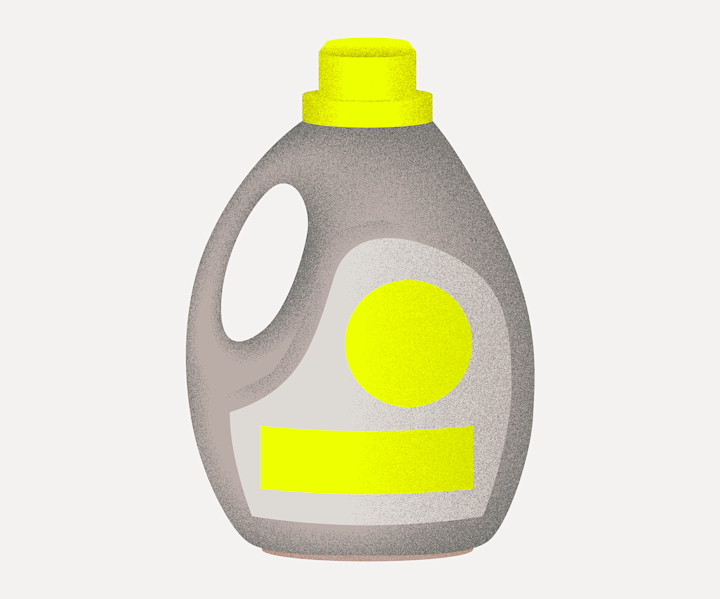

Drying instructions
Tumble dry on a low heat setting together with a couple of clean tennis balls until the garment is completely dry; this may take several hours.
Avoid the temptation to remove the item from the dryer too soon. Even if the outer fabrics feel dry, the down inside can still retain moisture.
Take the item out of the dryer every half an hour or so to separate out any lumps and fluff up the down by hand. When finished, store the product uncompressed in a dry, cool place.
Do not iron.
Note: Some of our insulated products use a loose synthetic fibre that looks and feels like down e.g. Essens Mimic styles. Like down, this fibre will need to be separated and lofted by hand during and after the drying process. The risk of the loose-fibre filling bunching is significantly reduced if the garment is regularly "shaken out".
How to patch a down jacket
Most of our insulated jackets, both down and synthetic, are made from light, thin fabrics with high tear strength, but they can of course be pierced.
For advice on fixing a hole in your jacket, see our repair guides:
- Make sure you have self-adhesive, pressure-sensitive repair tape or patches on hand. These are commonly available at specialist outdoor stores.
- Gently clean and dry the area around the hole. Remove any dirt or loose debris, but avoid machine washing to prevent the hole from getting larger.
- Trim any loose threads around the hole and carefully push any feathers back inside. Avoid pulling feathers out, as this can enlarge the hole and lead to more feathers escaping.
- Prepare your repair patch or tape. If it needs trimming, draw an oval (or another shape with rounded edges) on the backside of the patch. Ensure the patch is large enough to leave at least a 1cm margin around the hole.
- Use scissors to cut out the patch, ensuring the edges are well-rounded to prevent peeling.
- Carefully peel off the backing from the patch, avoiding contact with the sticky side.
- Place the patch over the hole, press it firmly onto the fabric, and use your fingernail or a tool like a credit card (with smooth edges) to smooth out any trapped air bubbles.
- Apply firm pressure for a little longer to ensure the patch adheres securely—and you’re done!
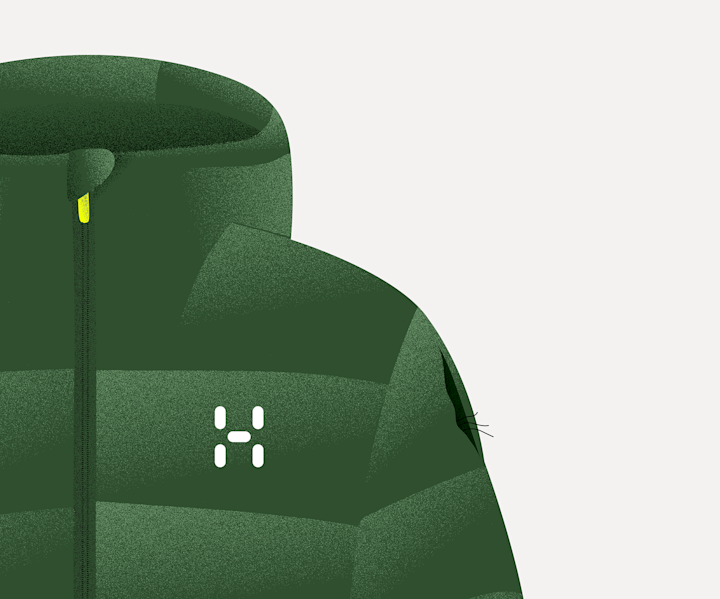
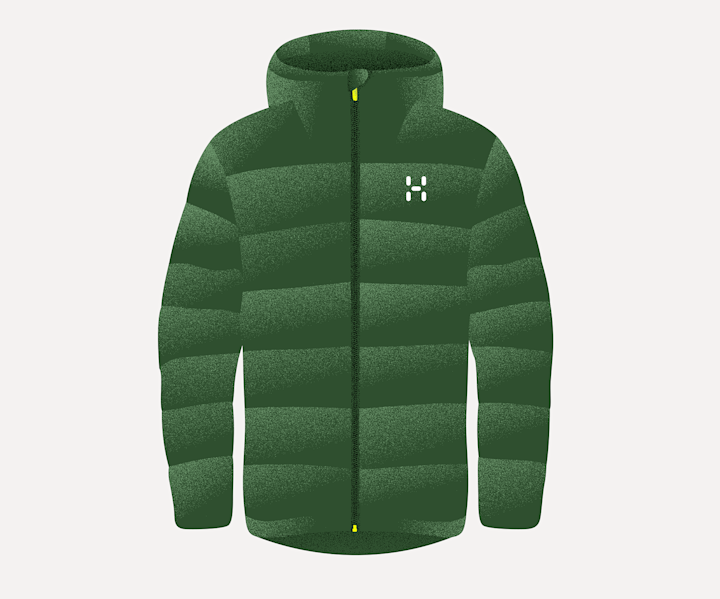
How to reactivate or reproof a garment
Insulated products are also lightly water repellent and can be re-proofed in order to keep its water repellency as good as new.
Washing and reactivating its waterproofing from time to time is essential.
- Here is how to reactivate your waterproof gear:
- Prepare the garment: Empty all pockets, close zippers, and fasten any loose flaps or straps.
- Wash: Wash at 40°C with a small amount of liquid detergent. For best results, use a detergent designed for outdoor gear, available at specialized outdoor stores.
- Avoid certain products: Do not use powder detergents, fabric softeners, stain removers, or bleach. Avoid washing with heavily soiled clothing.
- Rinse: Rinse the garment twice and minimize spinning during the wash cycle.
- Dry and reactivate: Tumble dry on a warm, gentle cycle. Once dry, tumble for an additional 20 minutes to reactivate the durable water repellent (DWR).
- If tumble drying is not an option, line-dry the garment. Once dry, use a low-temperature iron to reactivate the DWR, placing a towel between the iron and the garment. Do not use steam.